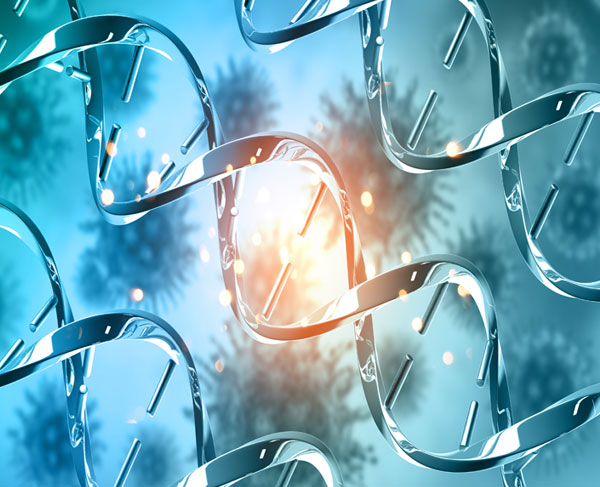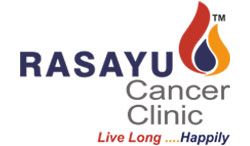Cancer Types
- Bladder Cancer
- Bone Cancer
- Breast Cancer
- Cervical Cancer
- Colorectal Cancer
- Endometrial Cancer
- Head & Neck Cancer
- Kidney Cancer
- Laryngeal Cancer
- Leukaemia
- Liver Cancer
- Lung Cancer
- Multiple Myeloma
- Nasopharyngeal Cancer
- Non-Hodgkin's Lymphoma
- Oesophagus Cancer
- Oral Cancer
- Ovarian Cancer
- Pancreatic Cancer
- Prostate Cancer
- Skin Cancer
- Stomach Cancer
- Testicular Cancer
- Thyroid Cancer
Opening Hours
- Monday - Saturday 10:00 am - 7.00 pm

Oesophagus Cancer
- Oesophageal cancer is cancer arising from the Oesophagus or the food pipe which runs between the throat and the stomach.
- This cancer stands at the 8th rank as the most prevalent among the cancer types.
- It amounts to 3.2% of the total cancer patients per year. Death rate is about 5.3% per year and the 5 year survival of the oesophagus cancer patients is 7.17%, as per Globocan, a global cancer study and research organization.
- People between the ages of 45 and 70 have the highest risk of oesophageal cancer.
- Men are 3 to 4 times more likely than women to develop oesophageal cancer.
- Tobacco and alcohol consumption have been found to be the biggest factor for its prevalence.
Causes
Alcohol
- Drinking too much alcohol increases risk of developing cancer of the oesophagus, the acetaldehyde associated with alcohol consumption increases the risk.
- Long-term heavy drinking causes irritation and inflammation in the lining of the oesophagus.
- If the cells in the lining of throatget inflamed, they are more likely to become malignant (cancerous).
- Alcohol mainly increases the risk of squamous cell carcinoma (a type of Oesophageal cancer).
Smoking
- Cigarettes contain nitrosamines and other chemicals that increase the risk of cancer.
- Smoking pipe, cigarettes, use of tobacco as snuff and chewing increases the risk of oesophageal cancer.
- Smoking increases the risk of the 2 main types of Oesophageal cancer :
– Squamous Cell Carcinoma
– Oesophageal Adenocarcinoma
Betel
- Betel quid with tobacco chewing is a high-risk factor for causing cancer.
Obesity
- Risk of developing cancer of the oesophagus in overweight persons is approximately double compared with people with a healthy weight for their height.
- This may be the reason that obese people are more at risk of developing Barrett’s oesophagus.
Diet
- A diet low in fruit and vegetables or lacking in vitamins A, C, B1 or zinc has been shown to increase the risk of cancer of the oesophagus.
- This type of cancer more common in the Far East and Central Asia where it is thought that this may be partly due to the type of diet in these countries, which includes fewer uncooked vegetables than the western diet.
- It may also be due to environmental factors.
- Pollutants and Chemicals Chemicals and pollutants that are known to increase the risk of Oesophageal cancer include : – Metal Dust. – Vehicle Exhaust Fumes. – Silica Dust (which comes from materials such as sandstone, granite and slate). – Rubber Production Industry.
- Helicobacter pylori infection
- Drugs and other medical treatments
- Tooth Loss
Human Papilloma Virus
- This type of virus is said to cause oesophageal cancer but there is no clear link that squamous cell it is related to HPV.
- Sexual activity with someone who has HPV is the most common way someone gets HPV.
- Research is ongoing to ascertain the extent of it as a cause to this cancer.
Barrett’s Oesophagus
- This condition can develop in some people who have chronic gastrooesophageal reflux disease (GERD) or inflammation oftheoesophagus called oesophagitis with or without symptoms of chronic heartburn.
- Damage to the lining of the oesophagus causes the squamous cells in the lining of the oesophagus to turn into glandular tissue.
- People with Barrett’s oesophagus are more likely to develop adenocarcinoma of the oesophagus, but the risk of developing oesophageal cancer is still fairly low.
Lye
- This a chemical regent used in washing clothes and disinfecting toilets.
- Children who have accidentally swallowed lye have an increased risk of squamous cell carcinoma.
- It is found in some cleaning products, such as drain cleaners.
Achalasia
- Achalasia is a condition when the lower muscular ring of the oesophagus does not relax during swallowing of food.
- Achalasia increases the risk of squamous cell carcinoma.
X rays, Gamma Radiation
Signs and Symptoms
When Oesophageal cancer first develops it rarely causes any symptoms as the tumor is very small. It is only when the cancer starts to become large and more advanced that symptoms start to develop –
- Difficulty for swallowing.
- Weight loss.
- Persistent indigestion.
- Pain in chest and back.
- Hoarseness of voice.
- Persistent cough.
- Vomiting & Coughing blood etc.
Physical Examination and Investigation
If you have symptoms that may signal Oesophageal cancer, your doctor will examine you and ask you questions about your health; your lifestyle, including smoking and drinking habits; and your family medical history.
One or more of the following tests may be used to find out if you have Oesophageal cancer and if it has spread. These tests also may be used to find out if treatment is working.
- Imaging Tests –
– X- rays
– CT or CAT (computed axial tomography) scans
– MRI (magnetic resonance imaging) scans
– PET (positron emission tomography) scans - Biopsy –
One of the following methods may be used to biopsy tissue to find out if you have Oesophageal cancer.
Esophagoscopy –
An endoscope is inserted through the mouth or nose into the oesophagus. The doctor looks at the oesophagus and removes small pieces of tissue.Endoscopic ultrasound (EUS) or Endosonography –
An endoscope is inserted through an opening in the body, usually the mouth or rectum. At the end of the tube there is a light, a tiny camera and a device that sends out ultrasound (high-energy sound) waves to make images of internal organs.Video Endoscopy –
An endoscope with a special fibre-optic camera is inserted through the mouth, allowing the doctor to view the oesophagus and biopsy the suspicious area.Bronchoscopy –
Using a tool called a bronchoscope, which is similar to the endoscope, the doctor looks at the trachea (windpipe) and the tubes that go into the lungs.Laryngoscopy –
With a tool called a laryngoscope, which is similar to the endoscope, the doctor examines the larynx (voice box).Biomarker investigations
Treatment
- To plan personalised treatment for each individual patient as every individual is different even if they have the same type of cancer.
- To improve health related quality of life (QOL) in all types and stages of cancer patients.
- To plan for partial or total regression of tumour depending on the nature of tumors.
- To increase overall survival (OS) of patients.
- To increase disease free survival (DFS) where complete resection of tumour is achieved.
- To provide a treatment option to patients who are refractory to conventional treatments like chemotherapy / radiotherapy / immunotherapy etc.
- To reduce the rate of growth of the tumor in recurrent and advanced staged cases.
- To increase progression free survival in advance cases.
- To reduce impact of symptoms related to progression of disease.
- To improve confidence of patients.
- To provide palliative support in end-of- life cancer cases.
- To add happiness and extension of life to cancer patients.
- To compliment other therapies like chemotherapy, radiotherapy in a synergistic way.
- To reduce severity or adverse effects of other conventional treatment. This reduces incidence and frequency of hospitalization.
- It is pertinent to note that Rasayu Cancer Clinic does not claim or blame anything while communicating any aspect to cancer patients.
- Rasayu Cancer Clinic focuses on Ayurveda fundamental based therapies.
- Rasayu Cancer Clinic believes in continuous improvement in service and science.
- Rasayu Cancer Clinic always advocates patient centric approach which leads to long and happy life of cancer patients.
- Every patient has a right to choose the therapy.
- Rasayu Cancer Clinic never imposes Rasayana therapy on patients but helps them to take the right decision, hence making patients/ relatives well aware about the disease and possible outcomes along with its risk benefit and cost benefit ratios.
- Rasayu Cancer Clinic is well connected with global updates in cancer care and therapies, through advisors and collaborations with national and international institutes.
Surgery
- Surgery is the most common treatment for cancer of the oesophagus.
- Part of the oesophagus may be removed in an operation called an Esophagectomy.
Chemotherapy
- Chemotherapy is a cancer treatment that uses drugs to stop the growth of cancer cells, either by killing the cells or by stopping them from dividing.
- When chemotherapy is taken by mouth or injected into a vein or muscle, the drugs enter the bloodstream and can reach cancer cells throughout the body (systemic chemotherapy).
- When chemotherapy is placed directly into the cerebrospinal fluid, an organ, or a body cavity such as the abdomen, the drugs mainly affect cancer cells in those areas (regional chemotherapy).
- The way chemotherapy is given depends on the type and stage of the cancer being treated.
- Possible side effects of chemotherapy – Click Here
- Side effects of Chemotherapy – Click Here
- Adverse drug reactions (ADRs) of Chemotherapy – Click Here
Radiation Therapy
- Radiation therapy is a cancer treatment that uses high-energy x-rays or other types of radiation to kill cancer cells or keep them from growing.
- There are two types of radiation therapy:
– External radiation therapy uses a machine outside the body to send radiation toward the cancer.- Internal radiation therapy uses a radioactive substance sealed in needles, seeds, wires, or catheters that are placed directly into or near the cancer. The way the radiation therapy is given depends on the type and stage of the cancer being treated. - Side effects of radiotherapy – Click Here
Immunotherapy
- Efficacy of the treatment is still not clear as per the National Library of Medicine, since there is a need for improved biomarkers.
- Cost of this treatment is high and many times does not fit into cost benefit ratio.
- Side Effects – Click Here
- Risk and Benefits of Immunotherapy – Click Here
- Side effects of Immunotherapy – Click Here
Laser Therapy
- Laser therapy is a cancer treatment that uses a laser beam (a narrow beam of intense light) to kill cancer cells.
Electrocoagulation
- Laser therapy is a cancer treatment that uses a laser beam (a narrow beam of intense light) to kill cancer cells
Rasayu Cancer Clinic Rasayan Treatment Protocol – To know more please click here
Rasayu Therapy is recommended for those :
- Who voluntarily opted for this treatment as their first choice.
- Who are disenchanted with the past treatments.
- Who do not see any other options of treatments.
- Who are looking for personalized treatment plan.
- Who desire a convenient home-based oral therapy which is easy for consumption.
- Who are susceptible to acquire hospital borne infections/ complications, hence not willing to be hospitalised.
- Who are looking for favourable risk benefit ratio.
- Who desire to improve Quality of Life benchmarks based on global standards and monitored regularly.
- Who wants to be involved in decision making for choice of treatment.
- Who are willing to be involved in monitoring the efficacy of Rasayana Therapy.
- Who believe in the transparency of the process by conducting regular investigations by biochemical parameters/ hi tech imaging techniques like PET scan etc.
- Who are looking for professionals being sensitive to the patient, the care givers and the family.
- Who desire to take even with other treatments including Chemotherapy / Radiotherapy.
Disclaimer : This Website contains certain links such as You Tube links, research paper links / website links / audio visuals / internet information already available in public domain. The information contained in the audio visuals is meant for use by qualified Medical Professionals. The content of the links etc has been made available for informational and educational purposes only. Rasayu Cancer Clinic and its associates do not make any warranties with respect to the accuracy, applicability, fitness, or the completeness of the content of such links etc. The information contained in such links represents the views and opinions of the original creator of such links and are not views endorsed by the Rasayu fraternity.


